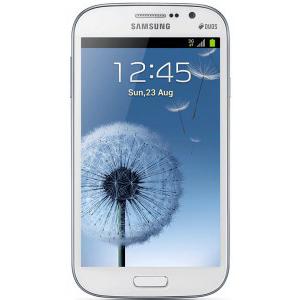Flash firmware on Samsung Galaxy Grand
Mobiles >> Samsung >> Samsung Galaxy Grand| Specifications | Reviews | Secret codes |
| Unlock phone | Root phone | Bypass FRP |
| Backup | Flash Firmware | Screenshot |
How to flash Samsung Galaxy Grand?
Why reinstall the firmware?
Errors begin to appear in the Android operating system.
Some installed applications do not open.
Many programs from the Play Market do not work.
The phone turns off for no apparent reason.
The phone started to work slowly.
You are not satisfied with the functionality of the stock firmware.
Where can I find the firmware?
On the official website of your phone manufacturer.
On sites where third-party developers post custom operating systems.
What should be done before installing the firmware?
Back up your contacts and user data and transfer it to your computer.
Insert SD card. An SD card is needed to write firmware to it.
Find out the exact model of your smartphone.
Fully charge your device. If the battery runs out during the firmware, the device will no longer turn on.
Download archive with Firmware. Place it on the SD card.
Installing TWRP Recovery
Install the Official TWRP App via the Play Market. And run this application.
When you start the application for the first time, you must agree to install the firmware, as well as agree to grant the application Superuser rights and click the 'OK' button.
After moving to the next screen, you need to select the 'TWRP FLASH' item and give the application root rights.

On the main screen of the application, the 'Select Device' drop-down list is available, in which you need to find and select the device model for installing the recovery.
After selecting a device, the application will direct the user to a web page to download the appropriate modified recovery environment image file. Download the suggested *.img file.
When the download is finished, you need to return to the main screen of the Official TWRP App and click on the 'Select a file to flash' button. Select the file downloaded in the previous step.
Now press the 'FLASH TO RECOVERY' button and confirm your choice, press 'OK'.
When the message 'Flash Completed Succsessfuly!' appears. Click 'OK'. The TWRP installation procedure is now complete.
Transfer the necessary files to the SD memory card. Using a PC or laptop card reader, it will be much faster.
Insert a memory card into the device.
To reboot in recovery, it is convenient to use a special item in the Official TWRP App menu, accessible by pressing the button with three stripes in the upper left corner of the main screen of the application. We open the menu, select the 'Reboot' item, and then tap on the 'REBOOT RECOVERY' button. The phone will reboot into the recovery environment automatically.
Firmware via TWRP

Before flashing, you need to delete all user data from the phone, this will avoid many problems. press 'WIPE' on the home screen.
Everything is ready to start flashing. Press the 'Install' button.

On the file selection screen, at the very top there is a 'Storage' button for selecting an SD card.
Select the storage to which the files were copied.

Select the firmware file and click on it. A screen opens with a warning about possible negative consequences, you need to check the item 'Zip signature verification', which will avoid using damaged files during recording.
The procedure for flashing the phone will begin, accompanied by the appearance of inscriptions in the log field and the movement of the progress bar.
The completion of the installation procedure is indicated by the inscription 'Successful'.
Summary: OS: Android (4.2.2, 4.1.2); Dimensions: 8 megapixels; Flash: LED; Features: Back-illuminated sensor (BSI), Autofocus; Camcorder: 1920x1080 (1080p HD); Front-facing camera: 2 megapixels; Processor: 1024 MB RAM; Built-in storage: 8 GB; Storage expansion: microSD, microSDHC, microSDXC up to 64 GB; Talk time: 10.16 hoursthe average is 11 h (675 min); Stand-by time: 18.3 days (440 hours)the average is 20 days (477 h); Capacity: 2100 mAh; Type: Li - Ion; Music player: ; Filter by: Album, Artist, Playlists; Features: Album art cover, Background playback; Supported formats: MP3, AAC, AAC+, eAAC+, WMA; Video playback: ; Features: Zoom, Stretch to fullscreen; Supported formats: MPEG ...
Comments, questions and answers on the flash firmware Samsung Galaxy Grand
Ask a question about Samsung Galaxy Grand




